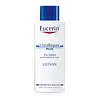What's inside
What's inside
 Key Ingredients
Key Ingredients

 Benefits
Benefits

 Concerns
Concerns

 Ingredients Side-by-side
Ingredients Side-by-side

Water
Skin ConditioningCetearyl Alcohol
EmollientButyrospermum Parkii Butter
Skin ConditioningCaprylic/Capric Triglyceride
MaskingJojoba Esters
EmollientGlyceryl Stearate
EmollientGlycerin
HumectantDimethicone
EmollientCaprylyl Methicone
Skin ConditioningHelianthus Annuus Seed Wax
Skin ConditioningPolymethylsilsesquioxane
Propanediol
SolventTapioca Starch
PEG-75 Stearate
Hdi/Trimethylol Hexyllactone Crosspolymer
Caprylyl Glycol
EmollientTocopheryl Acetate
AntioxidantArginine
MaskingRosa Damascena Flower Extract
MaskingButylene Glycol
HumectantXylitol
HumectantCryptomeria Japonica Bud Extract
Skin ConditioningSodium Hyaluronate
HumectantCarbomer
Emulsion StabilisingSaccharide Isomerate
HumectantSteareth-20
CleansingCeteth-20
CleansingXanthan Gum
EmulsifyingPolyglycerin-3
HumectantAcacia Decurrens Flower Cera
EmollientAcrylates/Vinyl Isodecanoate Crosspolymer
Emulsion StabilisingCaprylhydroxamic Acid
1,2-Hexanediol
Skin ConditioningTrisodium Ethylenediamine Disuccinate
Parfum
MaskingWater, Cetearyl Alcohol, Butyrospermum Parkii Butter, Caprylic/Capric Triglyceride, Jojoba Esters, Glyceryl Stearate, Glycerin, Dimethicone, Caprylyl Methicone, Helianthus Annuus Seed Wax, Polymethylsilsesquioxane, Propanediol, Tapioca Starch, PEG-75 Stearate, Hdi/Trimethylol Hexyllactone Crosspolymer, Caprylyl Glycol, Tocopheryl Acetate, Arginine, Rosa Damascena Flower Extract, Butylene Glycol, Xylitol, Cryptomeria Japonica Bud Extract, Sodium Hyaluronate, Carbomer, Saccharide Isomerate, Steareth-20, Ceteth-20, Xanthan Gum, Polyglycerin-3, Acacia Decurrens Flower Cera, Acrylates/Vinyl Isodecanoate Crosspolymer, Caprylhydroxamic Acid, 1,2-Hexanediol, Trisodium Ethylenediamine Disuccinate, Parfum
Water
Skin ConditioningGlycerin
HumectantUrea
BufferingCetearyl Alcohol
EmollientGlyceryl Glucoside
HumectantCyclomethicone
EmollientSodium Lactate
BufferingButyrospermum Parkii Butter
Skin ConditioningCaprylic/Capric Triglyceride
MaskingMethylpropanediol
SolventOctyldodecanol
EmollientDicaprylyl Ether
EmollientTapioca Starch
Glyceryl Stearate Se
EmulsifyingHydrogenated Coco-Glycerides
EmollientCarnitine
CleansingCeramide NP
Skin ConditioningSodium PCA
HumectantArginine Hcl
Skin ConditioningSerine
MaskingAlanine
MaskingHistidine
HumectantCitrulline
Skin ConditioningLysine
Skin ConditioningLactic Acid
BufferingSodium Chloride
MaskingDimethiconol
EmollientGlycogen
HumectantMannitol
HumectantSucrose
HumectantGlutamic Acid
HumectantThreonine
Chondrus Crispus Extract
Skin ConditioningSodium Cetearyl Sulfate
Cleansing1,2-Hexanediol
Skin ConditioningPhenoxyethanol
PreservativeWater, Glycerin, Urea, Cetearyl Alcohol, Glyceryl Glucoside, Cyclomethicone, Sodium Lactate, Butyrospermum Parkii Butter, Caprylic/Capric Triglyceride, Methylpropanediol, Octyldodecanol, Dicaprylyl Ether, Tapioca Starch, Glyceryl Stearate Se, Hydrogenated Coco-Glycerides, Carnitine, Ceramide NP, Sodium PCA, Arginine Hcl, Serine, Alanine, Histidine, Citrulline, Lysine, Lactic Acid, Sodium Chloride, Dimethiconol, Glycogen, Mannitol, Sucrose, Glutamic Acid, Threonine, Chondrus Crispus Extract, Sodium Cetearyl Sulfate, 1,2-Hexanediol, Phenoxyethanol
 Reviews
Reviews

Ingredients Explained
These ingredients are found in both products.
Ingredients higher up in an ingredient list are typically present in a larger amount.
1,2-Hexanediol is a synthetic liquid and another multi-functional powerhouse.
It is a:
- Humectant, drawing moisture into the skin
- Emollient, helping to soften skin
- Solvent, dispersing and stabilizing formulas
- Preservative booster, enhancing the antimicrobial activity of other preservatives
This ingredient is also known as shea butter. It is an effective skin hydrator and emollient.
Emollients help soothe and soften your skin. It does this by creating a protective film on your skin. This barrier helps trap moisture and keeps your skin hydrated. Emollients may be effective at treating dry or itchy skin.
Shea butter is rich in antioxidants. Antioxidants help fight free-radicals, or molecules that may harm the body. It is also full of fatty acids including stearic acid and linoleic acid. These acids help replenish the skin and keep skin moisturized.
While Shea Butter has an SPF rating of about 3-4, it is not a sunscreen replacement.
Shea butter may not be fungal acne safe. We recommend speaking with a professional if you have any concerns.
Learn more about Butyrospermum Parkii ButterThis ingredient is an emollient, solvent, and texture enhancer. It is considered a skin-softener by helping the skin prevent moisture loss.
It helps thicken a product's formula and makes it easier to spread by dissolving clumping compounds.
Caprylic Triglyceride is made by combining glycerin with coconut oil, forming a clear liquid.
While there is an assumption Caprylic Triglyceride can clog pores due to it being derived from coconut oil, there is no research supporting this.
Learn more about Caprylic/Capric TriglycerideCetearyl alcohol is a mixture of two fatty alcohols: cetyl alcohol and stearyl alcohol. It is mainly used as an emulsifier. Emulsifiers help prevent the separation of oils and products. Due to its composition, it can also be used to thicken a product or help create foam.
Cetearyl alcohol is an emollient. Emollients help soothe and hydrate the skin by trapping moisture.
Studies show Cetearyl alcohol is non-toxic and non-irritating. The FDA allows products labeled "alcohol-free" to have fatty alcohols.
This ingredient is usually derived from plant oils such as palm, vegetable, or coconut oils. There is debate on whether this ingredient will cause acne.
Due to the fatty acid base, this ingredient may not be Malassezia folliculitis safe.
Learn more about Cetearyl AlcoholGlycerin is already naturally found in your skin. It helps moisturize and protect your skin.
A study from 2016 found glycerin to be more effective as a humectant than AHAs and hyaluronic acid.
As a humectant, it helps the skin stay hydrated by pulling moisture to your skin. The low molecular weight of glycerin allows it to pull moisture into the deeper layers of your skin.
Hydrated skin improves your skin barrier; Your skin barrier helps protect against irritants and bacteria.
Glycerin has also been found to have antimicrobial and antiviral properties. Due to these properties, glycerin is often used in wound and burn treatments.
In cosmetics, glycerin is usually derived from plants such as soybean or palm. However, it can also be sourced from animals, such as tallow or animal fat.
This ingredient is organic, colorless, odorless, and non-toxic.
Glycerin is the name for this ingredient in American English. British English uses Glycerol/Glycerine.
Learn more about GlycerinTapioca starch is a thickening agent and is made from the cassava root, also known as yucca.
According to a manufacturer, it is an excellent talc replacement.
It is gluten-free.
Learn more about Tapioca StarchWater. It's the most common cosmetic ingredient of all. You'll usually see it at the top of ingredient lists, meaning that it makes up the largest part of the product.
So why is it so popular? Water most often acts as a solvent - this means that it helps dissolve other ingredients into the formulation.
You'll also recognize water as that liquid we all need to stay alive. If you see this, drink a glass of water. Stay hydrated!
Learn more about Water